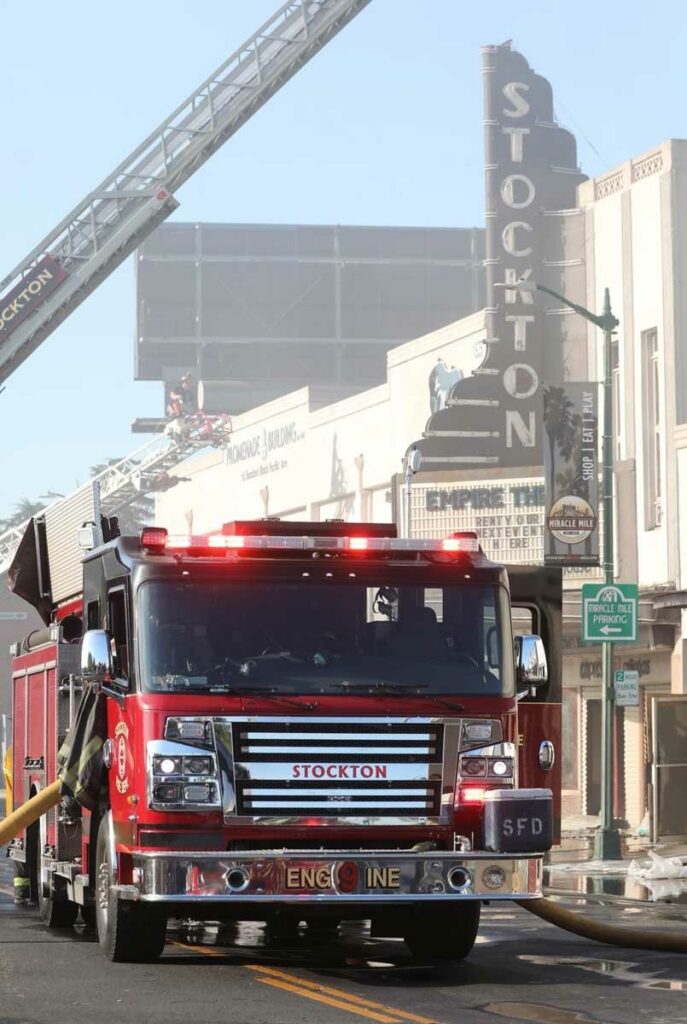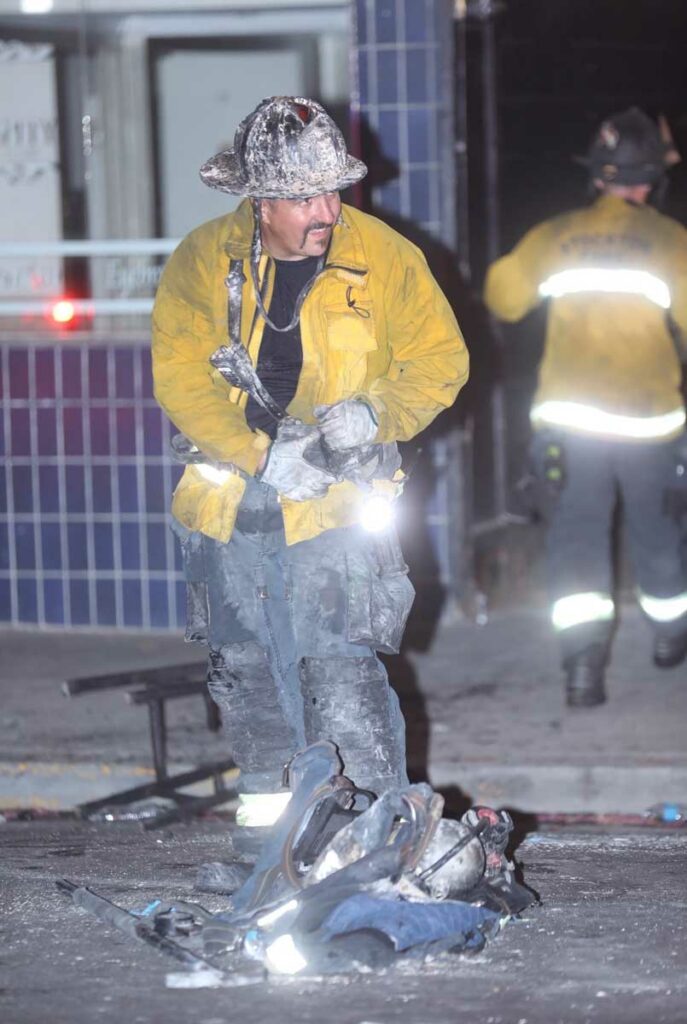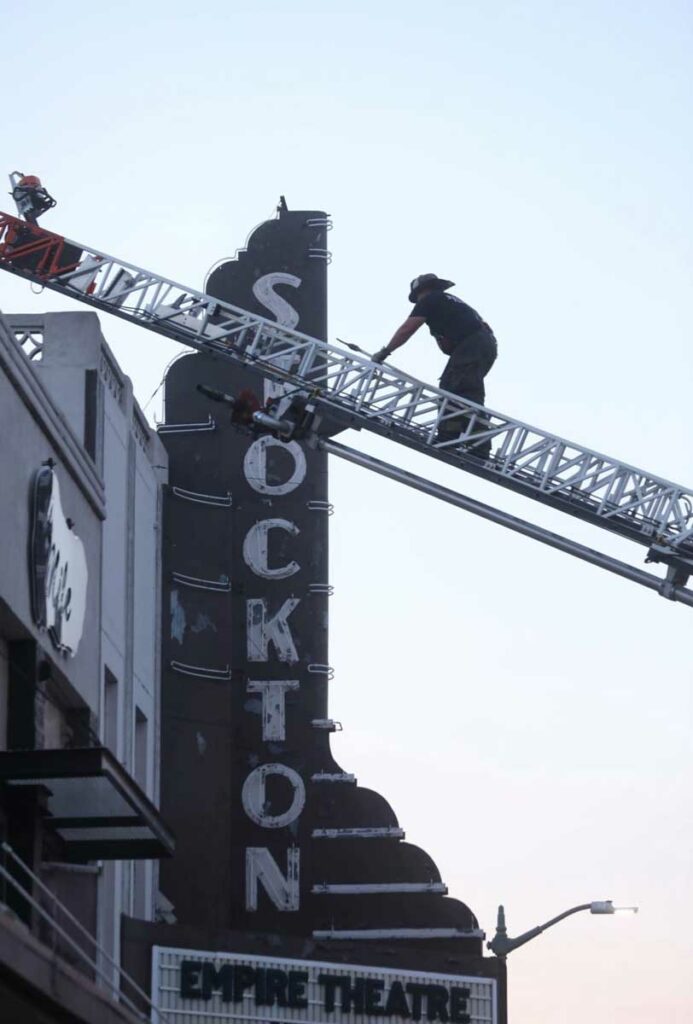
By Xavier Ricci
Photos courtesy Ulmerphoto
Observing the culture of the Stockton (CA) Fire Department (SFD) as a new firefighter, many things catch your attention. What stands out the most is the fireground pace you see at every fire. It seems as though every member knows what to do and when to do it without much communication. Why is that? How did this organization achieve this level of performance?
Our firefighting tactics vary based on our culture, staffing, and region. These differences are fundamental to our identity but are not necessarily applicable for other agencies given the differences in staffing and resources. What can be shared between departments, however, are the principles used to teach new firefighters our techniques and tactics.
“Safety accuracy SPEED” is at the core of the Stockton Fire Department culture, and is a motto that has been embraced by our division of training for more than 70 years. We apply these principles when teaching new members technical skills and tactical objectives on the fireground. These principles are at the core of everything we do and can be easily identified in our performance.
- Tactical Safety for Firefighters: Quick, Aggressive, Violent
- Aggressive Truck Functions for a Safer Fireground
- Being Aggressive Does Not Mean Being Reckless
Safety
Safety is rooted in preparation. This mindset is the single most important factor in keeping our citizens and firefighters safe. There is no doubt that there are risks in firefighting, but we embrace that risk by making an effort to be good at our jobs and fighting fire aggressively. Through repetition and newly formed muscle memory we learn the “how” of firefighting. Once we are good at the “how,” we can then learn the why and when of applying these new skills. A commitment to building thinking firefighters supports our mission and ensures our succession plan. As new members begin to evolve, we put them in situations that force them to solve problems in the districts we work in. They learn the application of “why” and “when.” Knowing “why” is important; if we know why, then we can deviate and adjust to dynamic situations. Once we know why, we can then focus on when it is appropriate to apply a particular technique or tactic.



While training, we find opportunities for our members to make decisions, solve problems and make mistakes based on our values. If we are going to make a mistake, make it going full speed and taking action, especially in training. Mistakes will happen, we have to find ways to overcome them. It is real life. Recovering from the mistake is just as important as learning the skill itself. Our efforts are geared toward building our new members into thinking firefighters. In our experience, thinking firefighters can solve problems, proactively follow the flow of an incident, and dictate their objectives more effectively than robots following a checklist.
As company officers, the best way we can keep our companies safe is to make sure they are good at their job. Officers should do what they can to control the controllable. Fighting fire aggressively, dictating our objectives, and finding opportunities to win increases safety. This mindset allows us to solve problems in the shortest time possible. If we can do that, the fireground has in turn become a safer place for our citizens and our department members.
Accuracy
Accuracy refers to successfully completing tasks on the first attempt, and it too is grounded in preparation. It takes a commitment to practice to perform accurately. Firefighters practice so that we can make decisions intuitively based on the current and predicted conditions. We have the ability to improve victims’ chances of survival if we get it right the first time. We also have the ability to control the size and complexity of the incident.
Once the bell sounds, time is working against us, and if that time is lost it will never be recovered. The success of the mission depends on effectively accomplishing tasks that support our tactics and strategies. Having an expectation of accuracy is an approach that sets us up for success on our fireground. As professionals, we have a duty to get it right the first time. At the beginning of our careers, we learned our trade and the basic skills required to be firefighters or tradesmen. Firemanship, on the other hand, is a craft that comes from creating with passion, care, and attention to detail. It is a quality that is practiced and refined over a career.
In the SFD, firemanship requires the understanding of the concept, “Take time in order to make time.” We cannot sacrifice quality in the pursuit of efficiency. If we are accurate, our SPEED will increase. Yet SPEED without accuracy is counterproductive. For this reason, accuracy does not stand alone as it is closely intertwined with SPEED. If we are frantically racing to mask up and skin is exposed when we are done, our efforts are lost, since time must then be taken to reverse our steps and accurately fix the problem. By performing our techniques and tactics with accuracy, time will not be lost.
SPEED
In the SFD, we like to say SPEED is not a distant third with regard to safety and accuracy; the capitalization of the term throughout this article is to emphasize this. It is equally, if not more important, than the first two principles. SPEED is defined as moving quickly, but it is more than hustle and more than the actual rate of movement. Our members are taught to move fast but act even faster. There are five contributors to SPEED, all equally important:
- Simplicity
- Anticipation
- Make rapid transitions
- Experience
- Cooperation
Keep it simple. Leo Stapleton, the Commissioner of the Boston (MA) Fire Department, is quoted as saying: “The procedures need to be uncomplicated; the fire will provide all of the complication you want.” There should be an effort to keep things simple and an appreciation of those simple things. Simplicity promotes SPEED whereas complexity tends to slow things down.
SPEED begins with acting fast, which is much different than rapidly acting and simply moving fast. Tom Brennan, a truck captain with the Fire Department of New York and former editor in chief of Fire Engineering, had a saying that is at the root of acting fast: “If it’s your first time thinking about it, you’ve already spent too much time thinking.” Time is wasted if we don’t know what to do when we see it. Anticipation is important when we are talking about acting fast. Once we have mastered our roles and understand the roles above and below us, we can begin to anticipate the next step. Accurate anticipation creates decisive timing and helps to maintain fireground tempo.
Decisive timing allows us to move rapidly through transitions from one action to another. Transitions can cause friction. Consider exiting the apparatus on a fire scene as a transition. One way to reduce friction involves exiting the apparatus with your fire gear on, with knowledge of your role on the fireground and the appropriate tools to fulfill that role. Reducing friction lessens the loss of tempo at those points of transition.
Experience can increase SPEED on several fronts as the proficiency gained through experience can increase members’ effectiveness. When comparing the performance of a probie to a veteran firefighter, there is a clear difference in the ratio of applied effort to work completed. Years of sets and reps provides a clear advantage. Stability in our tours also plays a clear advantage. The SFD does not have a bid system for tours. We have a letter-writing process for assignments. This practice strengthens company cohesion and experience because we are stable in our assignments for years. Firefighters train together, respond to incidents together, and learn our districts and the members we work with.
Cooperation is the marriage between self-discipline and initiative. SPEED can be increased when all our members are taking initiative and working towards a common goal. Self-discipline allows members to pursue what’s best for those around them, their company, and fire department. As leaders, we can ensure cooperation by creating an environment that not only expects discipline, but demonstrates it. This cooperative, aggressive spirit demonstrated by SFD members is a result of being well-trained professionals.
Safety, accuracy, and SPEED are all interconnected. The successful performance of each of these principles feeds into the next. When we integrate these three principles, there is an obvious synergistic effect that is seen in our firehouses and on our incidents. If we master the basics and fight fire aggressively, our competence will enhance our SPEED, and our SPEED ensures our safety as we begin mitigating the various problems we face when they are still in the “incipient stage,” as it were. This foundation is critical to our culture and makes us who we are.
Xavier Ricci is a 15-year member of the Stockton Fire Department. He has served the citizens of Midtown Stockton for the last four years as the captain of Engine Company 9.

